Every October, Albuquerque, NM pays host to the International Balloon Fiesta, a ballooning event lasting more than a week. The main event takes place at Balloon Fiesta Park on the north side of the city and right next to the park is the Anderson Abruzzo Albuquerque International Balloon Museum.
As the name suggests, the museum is dedicated to the history of ballooning, with several of the exhibits having a significant link to Albuquerque itself.
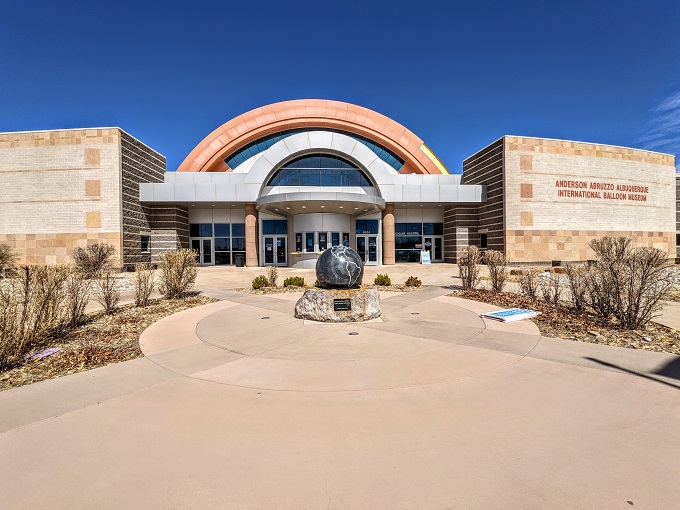
Although some museums in New Mexico have been closed during our time here due to COVID, the Anderson Abruzzo Albuquerque International Balloon Museum was open and so we decided to pay it a visit one afternoon.
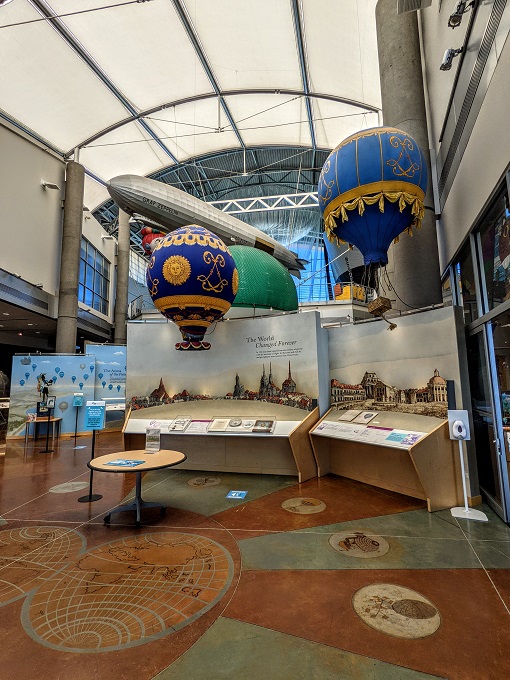

The museum has a large number of original ballooning artifacts, along with a number of replicas to give you an idea of the design of some of the older balloons and their gondolas (the baskets beneath).
There’s all kinds of fascinating information about ballooning at the museum, with the Fugo balloons used by Japan in World War II being particularly interesting as we’d never heard of their usage in the past.
Here’s just some of what we learned during our visit:
Le Martial

Le Martial was the first hot air balloon, launched on September 19, 1783. Rather than having human passengers, contained inside the wicker basket were a duck, sheep and rooster. This was done to test that mammals could breathe at that type of altitude (they could).
Le Reveillon
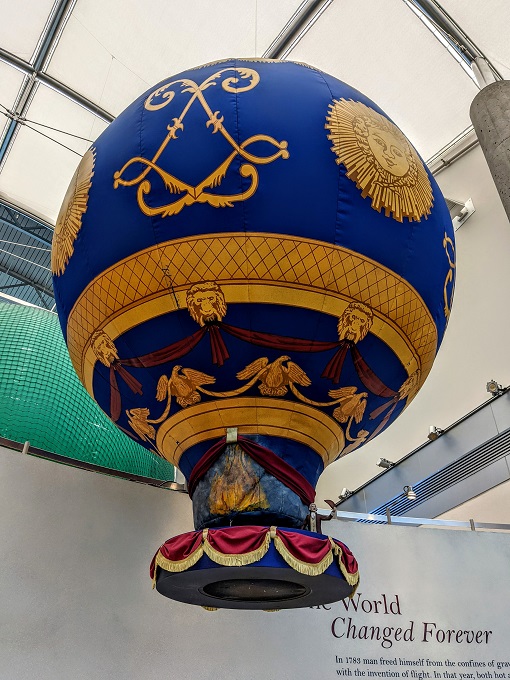
On November 21, 1783, Le Reveillon was the first piloted, non-tethered balloon flight. Inside the gondola were Pilâtre de Rozier and Marquis d’Arlandes and they flew for six miles at about 3,000 feet over Paris.
To heat the hot air balloon, chopped straw, wool soaked with alcohol, putrid meat and old shoes were burned, so it probably wasn’t the most pleasant smelling of flights. They had enough fuel to keep going up to 30 miles, but the balloon fabric was being burned by the fire and so they decided to land the balloon earlier.
The Charles Balloon
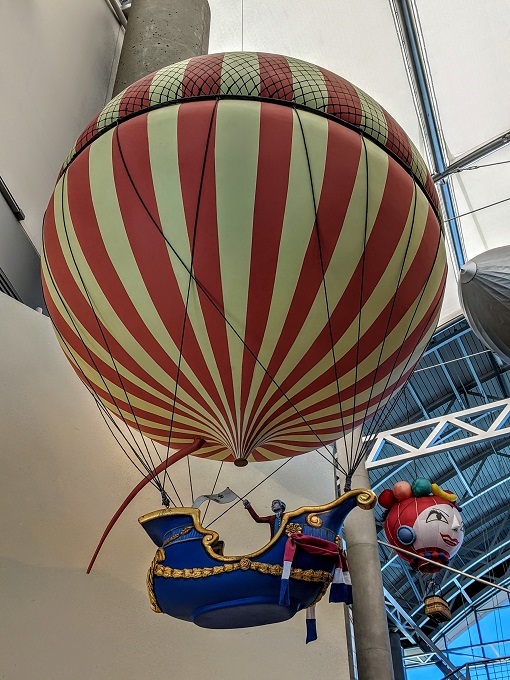
On December 1, 1783 – less than two weeks after the flight of Le Reveillon – the Charles Balloon took off in France carrying Jacques Charles and Noël Robert. Theirs was the first gas balloon and they traveled for 22 miles. After landing, Jacques Charles took off again by himself and traveled for another 35 minutes which made his voyage the first ever solo flight.
Blanchard’s Balloon

Blanchard’s Balloon was named after Jean-Pierre Blanchard, one of the two crew members (the other was Dr John Jeffries). The Blanchard’s Balloon flight was notable because it was the first time a balloon crossed the English Channel which also made it the first international flight, all the way back on January 7, 1785.
About a third of the way across the Channel they lost a lot of altitude, so they shed as much weight as they could – including clothing! – and fortunately made it across the water before landing in Calais, France.
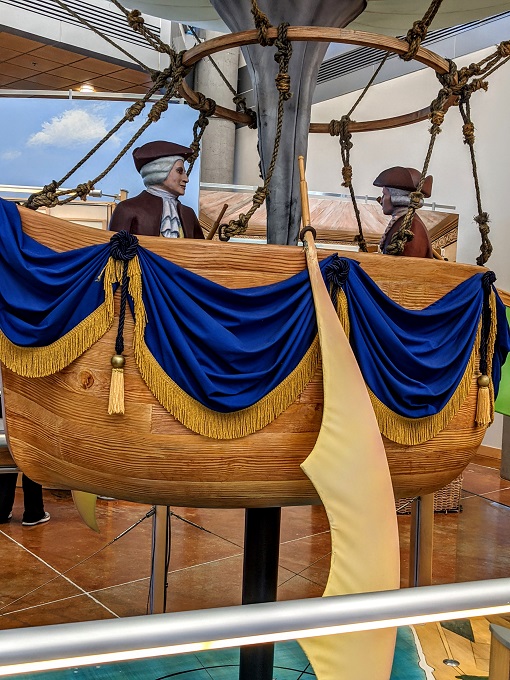
Another notable feature of their flight is that they kitted out their gondola with oars on the side and a fabric ventilator at the back. They did this believing it would help steer the balloon, but when they lost so much altitude over the English Channel they had to jettison them in order to regain height.
Photography
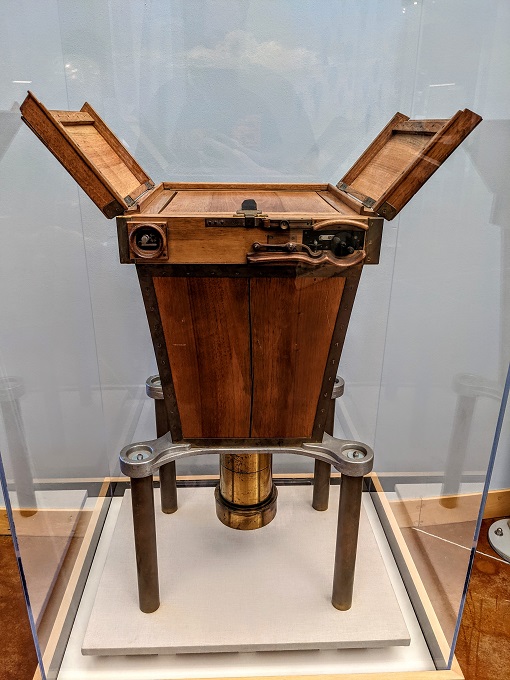
Balloon flight meant that humans were able to see the world from a whole different vantage point to that experienced throughout history. The invention of the camera a century later meant that those views could be recorded for other people to see, so some aeronauts took cameras up with them.
Size

I thought the image above was pretty cool as it helps give an idea of quite how huge even an average-sized balloon is. Every cubic foot of air can only lift about quarter of an ounce, so to lift 1,000 pounds you need approximately 65,000 cubic feet of air, but you’d obviously need a much larger balloon to lift 22 elephants.
Barographs
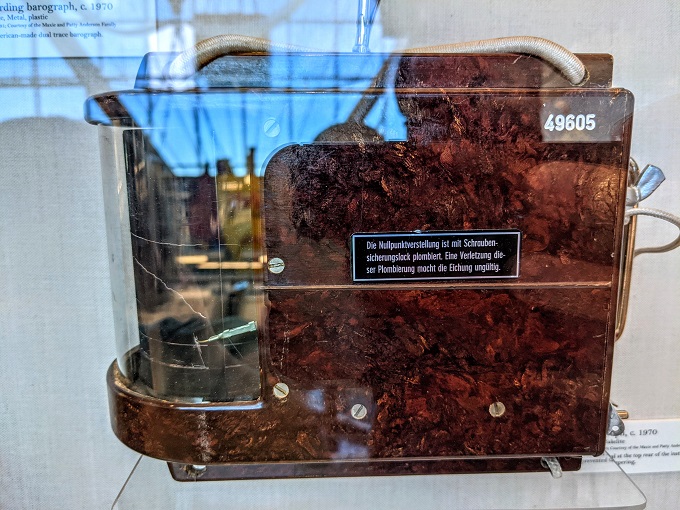
To record balloon flights, barographs were taken up on flights. In the glass section on the left of the barograph pictured above, you can see a small needle – a little like on a record player.
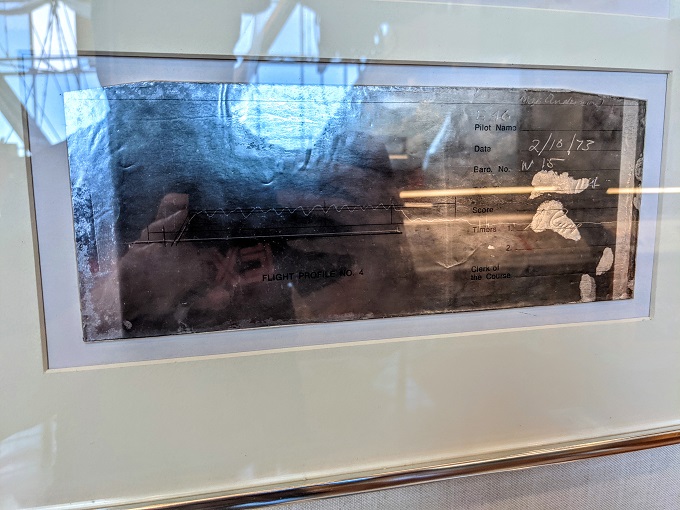
This recorded the barometric pressure which gets affected by altitude, so if you look carefully at the foil sheet in the photo above you can see a line scratched along it which shows the fluctuating height of a balloon flight from 1973.
Fugo Balloon
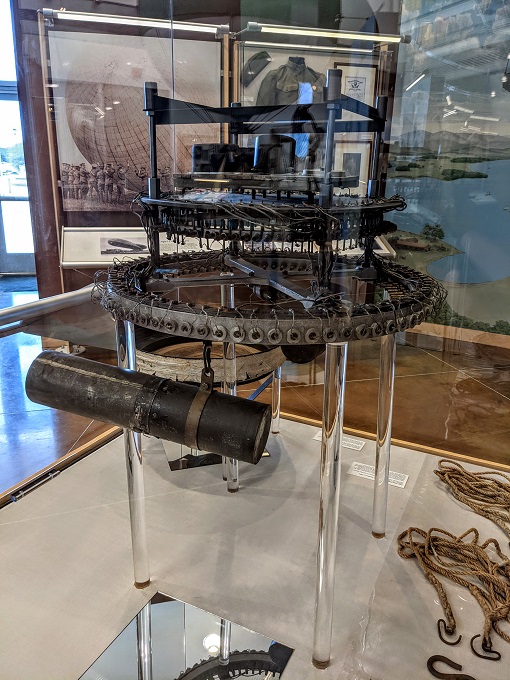
I mentioned earlier that one of the most interesting parts of the museum was the exhibit with the Fugo balloon. Meteorologists in Japan discovered that there were sometimes high speed wind corridors blowing in excess of 200 mph at times. The winds crossed the Pacific Ocean from Asia to North America, so during World War II Japan sent a number of Fugo balloons carrying explosives across the Pacific in the hope that they’d land on US soil and cause damage.
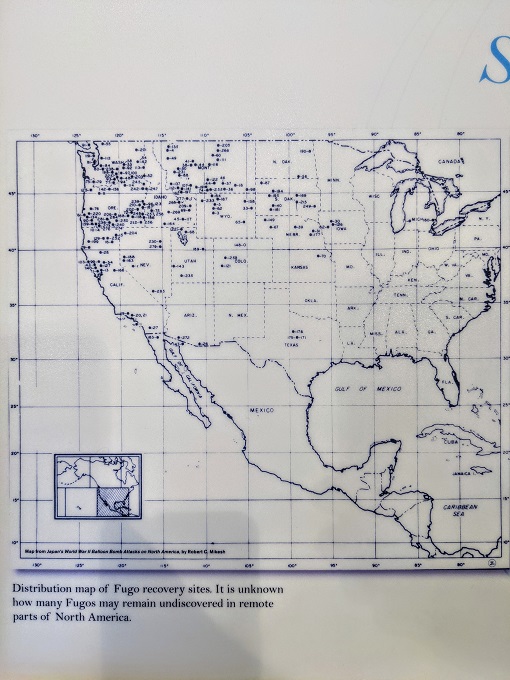
Up to 10,000 balloons were released by the Japanese military, with up to 1,000 of them being known to have reached the US, landing as far east as Michigan. Thankfully they didn’t do much damage; the meteorologists determined that the best jet streams occurred in the winter, so when they landed in the northern US the snow cover meant they didn’t cause any harm.
Neither Shae nor I had ever heard of this part of World War II and found it incredibly interesting. Equally interesting (and perhaps a little concerning) is that it’s not known how many undiscovered Fugo balloons might be laying around in more remote parts of the US!
Stratolab
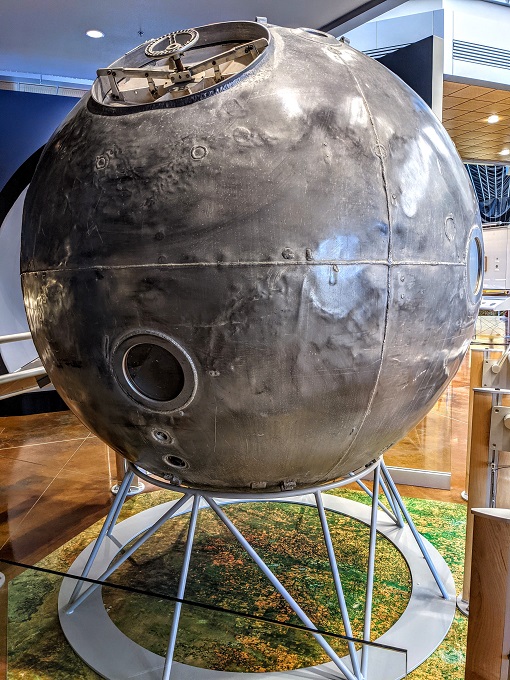
It might look more like something out of a sci-fi movie, but the Stratolab project conducted five flights between 1956 and 1961, with the capsule in the photo above being used for four of those five flights. The flight in 1961 set a manned altitude record of 113,739 feet, a record which stood until 2012.
Stratolab contained two crew members and was used by the US Navy to conduct all kinds of experiments including the detection of cosmic rays and development of space suits.
Double Eagle & Double Eagle II
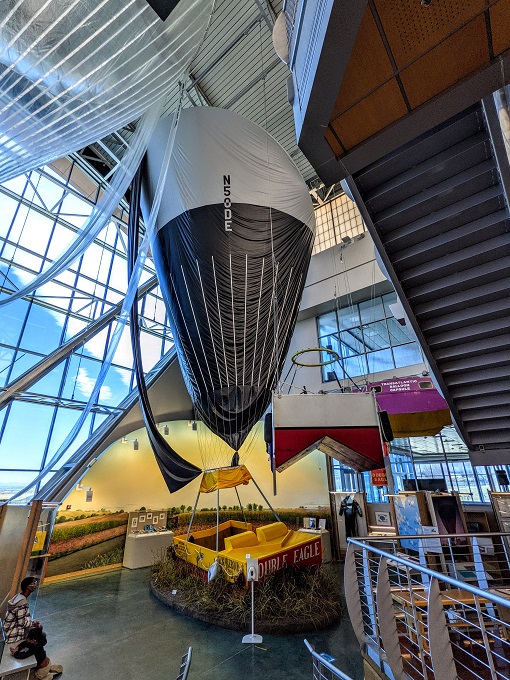
The Anderson Abruzzo Albuquerque International Balloon Museum has the original Double Eagle gondola. In 1977, Ben Abruzzo and Maxie Anderson (the two aeronauts for whom the museum is named after) set off in the Double Eagle aiming to be the first people to cross the Atlantic Ocean in a balloon. They didn’t make it, landing in the ocean near the coast of Iceland.
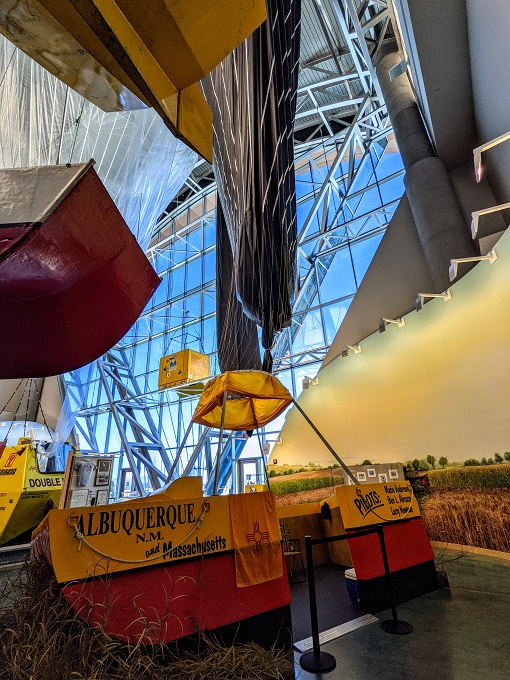
Undeterred, they set off again in 1978 with an additional crew member – Larry Newman. Their second flight almost ended as badly as that first flight. When they were off the coast of Ireland, the balloon dropped from 19,500 feet to 4,000 feet. They jettisoned water, food, equipment, radios and more and managed to regain enough height to continue on their journey.
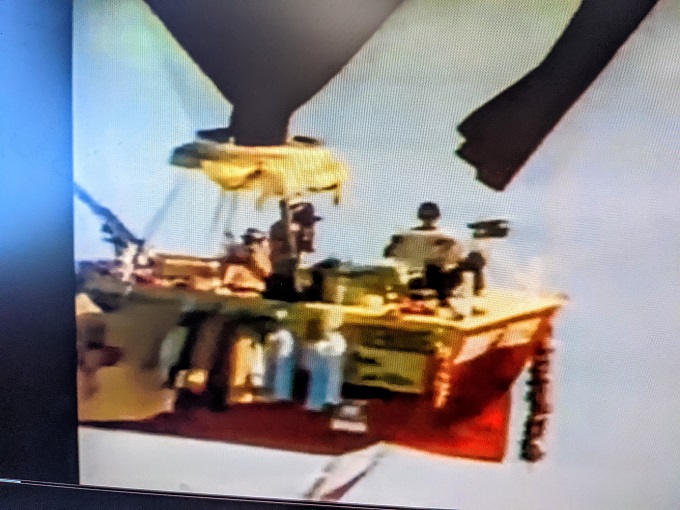
The museum has a five minute video featuring news footage taken of the flight at the time, so that’s well-worth watching when visiting.
After recovering from that sharp drop, the Double Eagle II made it all the way across the Atlantic, eventually touching down in France. This was therefore the first successful transatlantic balloon flight which lasted almost six full days.
Double Eagle V
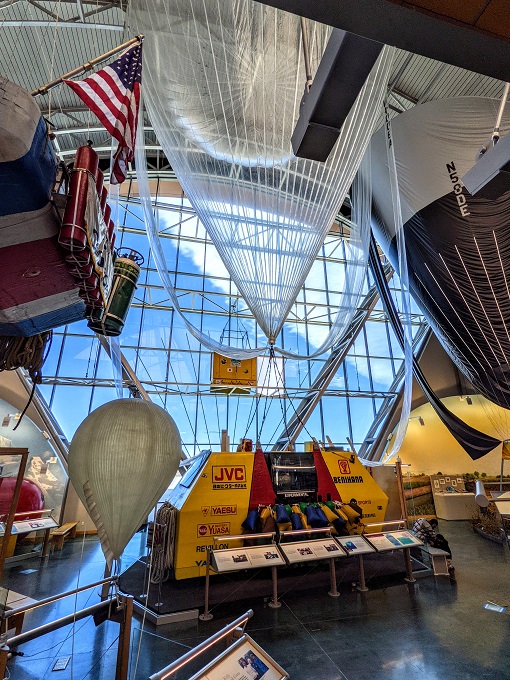
Not content with setting the record as two of the first people to cross the Atlantic Ocean in a balloon, Abruzzo and Newman (along with a couple of other crew members – Rocky Aoki, the owner of Benihana restaurants and Ron Clark, a real estate developer) set off in the more sturdy-looking Double Eagle V in an attempt to be the first to cross the Pacific Ocean in a balloon.

They set off from Japan on November 10, 1981. The balloon suffered from ice build-up along the way, with an estimated three tons of it accumulating atop the balloon. Needless to say, this additional ballast wasn’t expected, but some of it slid off as the air got warmer.
The Double Eagle V made it all the way across the Pacific Ocean, setting a record for the first manned free gas balloon to manage that feat, as well as setting a new distance record (at the time) of 5,768 miles. It wasn’t entirely successful though as the balloon crash landed in the Mendocino National Forest in California, but thankfully all the crew members were unhurt.
Kitty Hawk
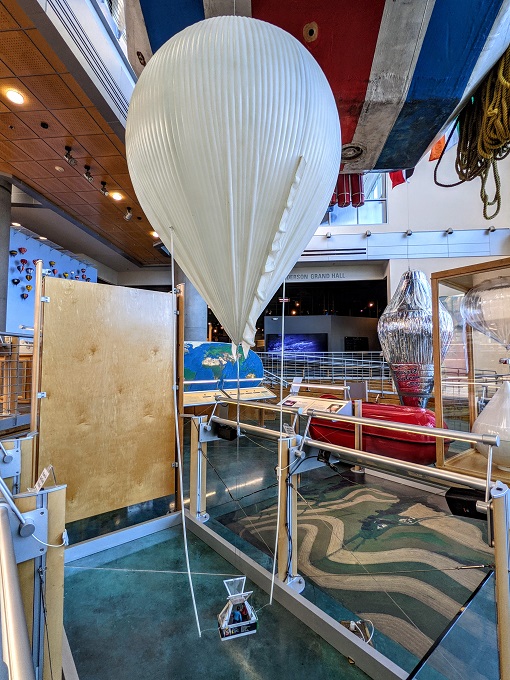
The Kitty Hawk’s crew consisted of Maxie Anderson (of Double Eagle and Double Eagle II fame) and his son Kristian. It was the first transcontinental flight, with the Andersons aiming to fly from San Francisco to North Carolina.
Although they succeeded in being the first transcontinental flight, wind patterns meant they ended up landing in Canada rather than North Carolina, almost exactly 100 hours after setting off.
Jules Verne
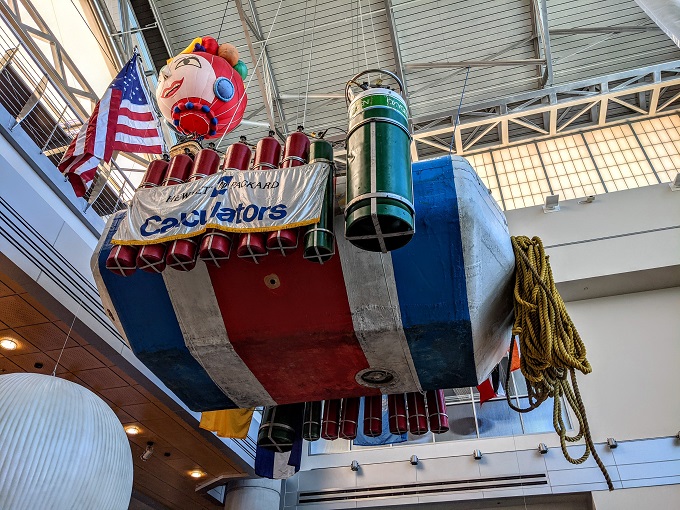
The Jules Verne was a helium balloon which had an envelope of almost 500,000 cubic feet (an average balloon is 70-90,000 cubic feet). Maxie Anderson was one of the crew members (along with Don Ida), and they built the gondola of the Jules Verne around the frame of the Kitty Hawk’s gondola.
They built the Jules Verne in an attempt to be the first to circumnavigate the globe in a balloon. They conducted three flights from 1981-82, but were unsuccessful on all three attempts.
Both Anderson and Ida sadly died in a separate ballooning accident in 1983. It’s thought their balloon struck a cable which separated the gondola from the balloon in Germany.
Breitling Orbiter 3
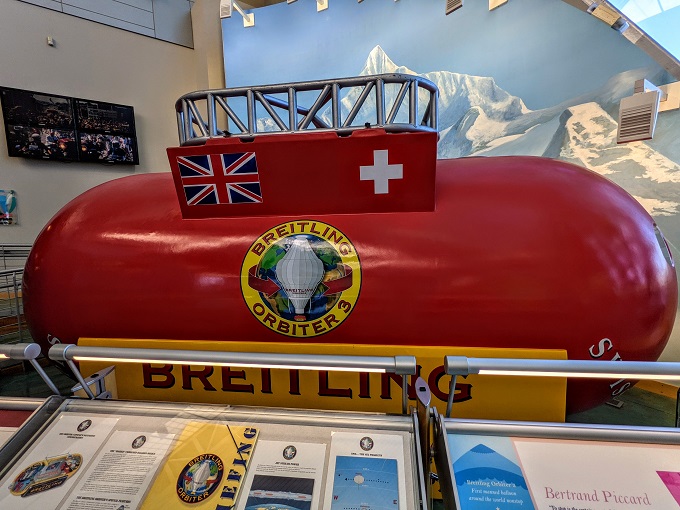
Where the Jules Verne failed, the Breitling Orbiter 3 succeeded, albeit at its third attempt.
The Breitling Orbiter 3 was piloted by Bertrand Piccard and Brian Jones, setting off from Switzerland on March 1, 1999 in an attempt to be the first nonstop round-the-world balloon flight. Over the course of almost three weeks in the air, they traveled more than 25,000 miles and successfully completed their challenge of flying around the world.
Two Eagles

On January 25, 2015, Troy Bradley and Leonid Tiukhtyaev took off in the Two Eagles balloon from Japan. They flew for 6,656 miles and traveled for almost an entire week, setting both distance and duration records for a straight gas balloon flight (the previous record was held by the Double Eagle V).
The Anderson Abruzzo Albuquerque International Balloon Museum has a video you can watch featuring the feat by Bradley and Tiukhtyaev.
Red Bull Stratos
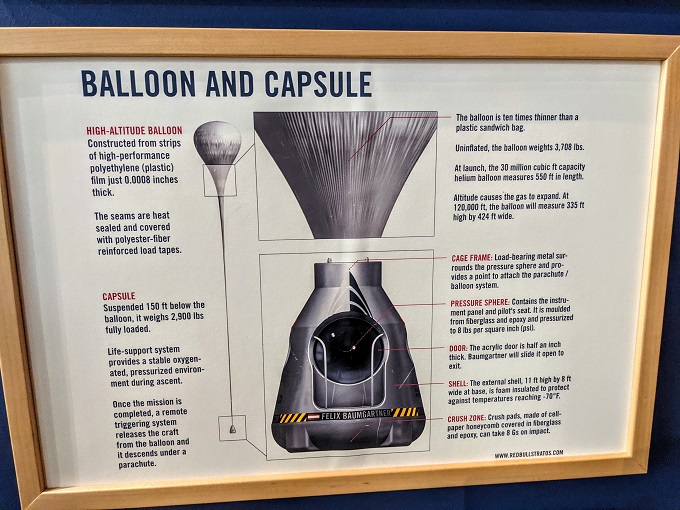
On October 14, 2012, Felix Baumgartner ascended in a helium balloon to 127,852 feet before jumping from the balloon and freefalling almost 120,000 feet. In the process of doing this he was the first person to ever break the sound barrier outside of a vehicle.
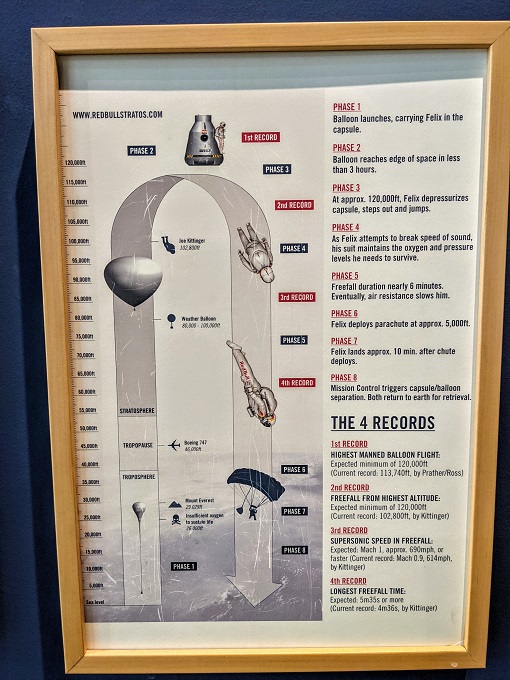
I vividly remember watching his jump live, although I think they might have had it on a slight delay in case something happened. It was a little scary watching him seemingly spinning around out of control at one point, but it was ultimately an incredibly successful jump despite not managing to break the freefall record duration-wise.
If you’ve never watched Felix Baumgartner’s jump, I highly recommend watching the video below.
Arctic Air Exhibition

One of the final exhibits was Arctic Air, a comprehensive account of an attempt to reach the North Pole by Salomon August Andrée, Nils Strindberg and Knut Fraenkel.

The three of them set off on July 11, 1897, but almost immediately their flight didn’t go to plan.
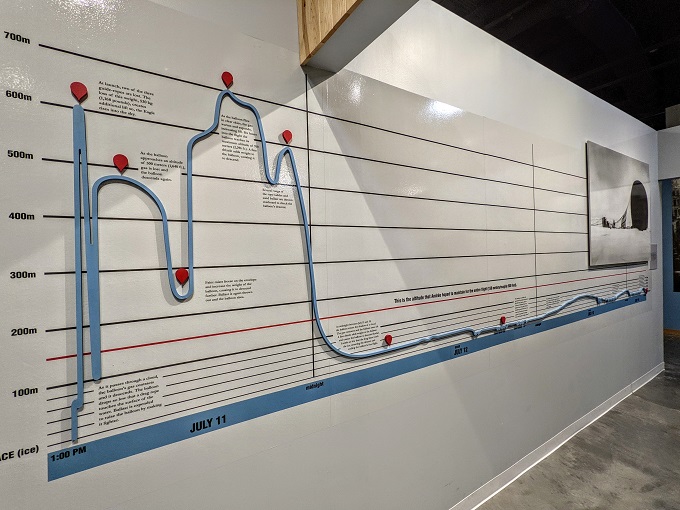
As you can see in the photo above, the balloon had a sharp ascent, along with an almost equally sharp descent. They managed to keep traveling for 65 hours, with their gondola bumping along the ice at times.
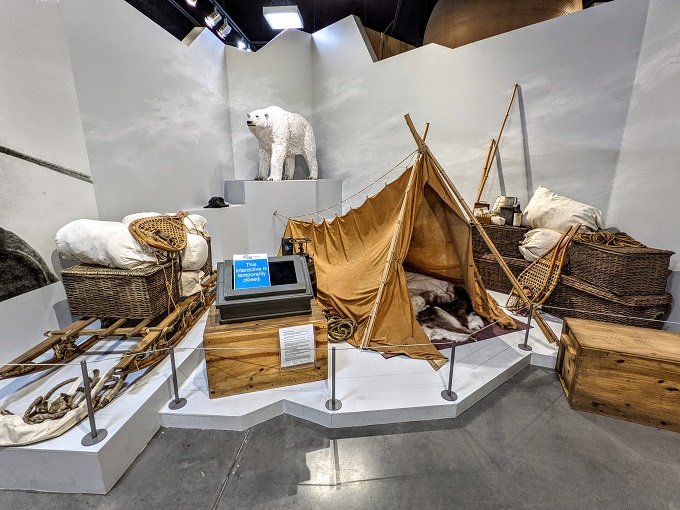
The three explorers never made it to the North Pole. After landing, they took their sleds and equipment and headed east. Unfortunately a week later they found themselves further west than where they started as currents had moved the ice they were walking across.
They eventually reached land in October, three months after they’d set off. However, they passed away within a couple of weeks of arrival and before they made it to the North Pole. Their cause of death is unknown; one theory is that parasites in polar bear meat they ate might have poisoned them. Another is that hypothermia, dehydration and exhaustion took their toll on their bodies.
Strindberg’s body was found buried under rocks which suggests that he was the first to pass away. Fraenkel’s body was in their tent, while Andrée’s body was found seated on a ledge above their campsite.
Final Thoughts
The Anderson Abruzzo Albuquerque International Balloon Museum is a very interesting museum covering the entire history of balloon flight, from the first flights in the 1700s to modern day expeditions.
The museum has done a good job of having a lot of interesting exhibits to look at with just the right amount of information about each balloon. There’s not so much information that you’re overloaded with details and can’t take it all in, but also not too little information so that you’re left wondering about each balloon.
Ticket Prices
When we visited the Anderson Abruzzo Albuquerque International Balloon Museum in March 2021, the ticket prices were:
- Adults – $6
- Adults (NM residents) – $5
- Seniors 65+ – $4
- Youth 6-17 – $3
- Children 5 & under – Free
If you live in Albuquerque and are interested in visiting the museum more frequently, it’d be worth checking Groupon as they were offering memberships at ~40% off while we were there. It wasn’t worth it for us as we were only visiting one time, but if you’d be visiting at least three times in a year then the discounted membership could save you a lot of money.
Address
Anderson Abruzzo Albuquerque International Balloon Museum, 9201 Balloon Museum Dr NE, Albuquerque, NM 87113
Great review — thanks. I went to the Festival many many years ago. Since you’ll be in Arizona next, if you can fit it in your schedule, check out the Thunderbird Balloon Classic in late April. If you do go, make sure to go early (sorry night owls) to watch them fill the balloons. Spectacular!!
Thanks for the tip – I’ll see if they’re holding it this year.